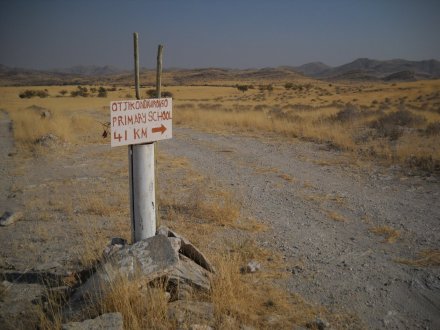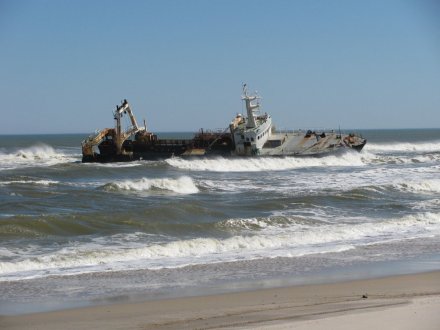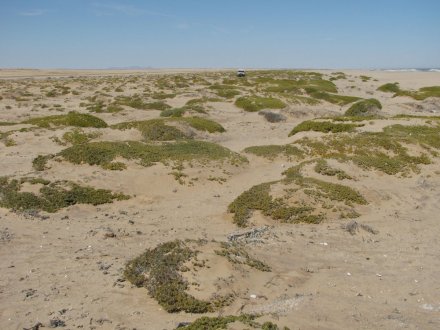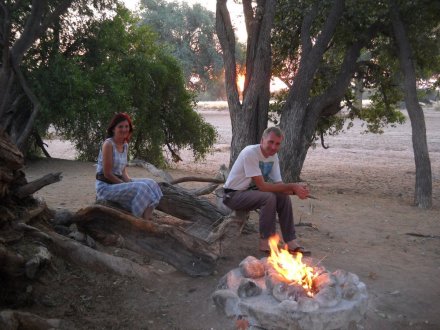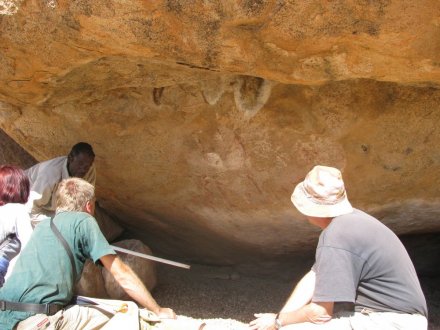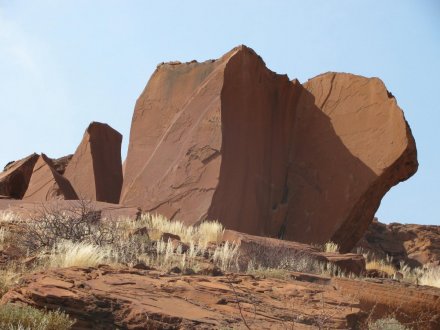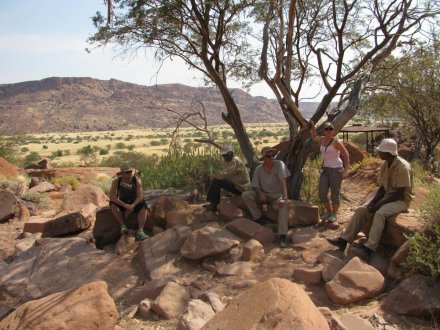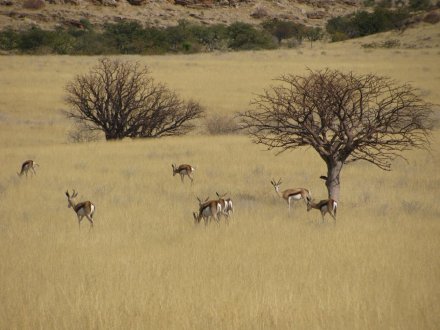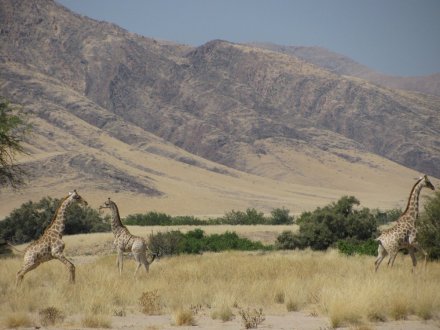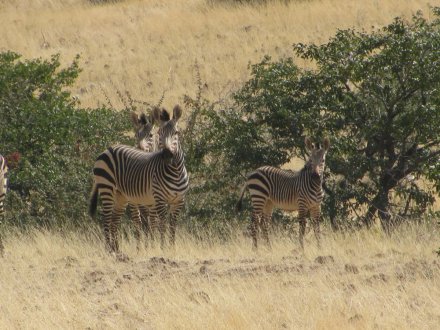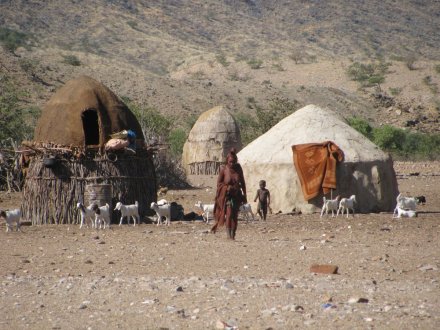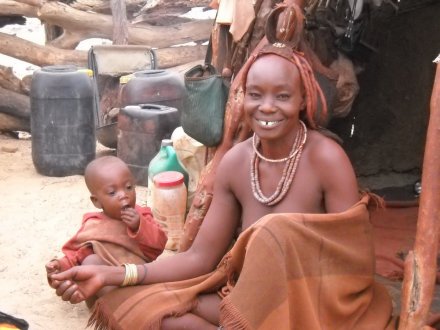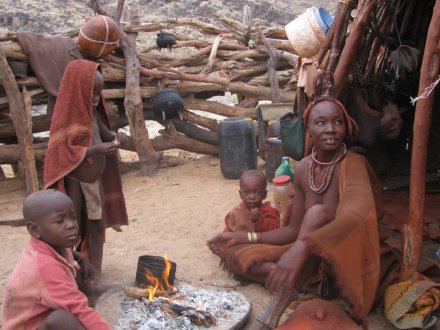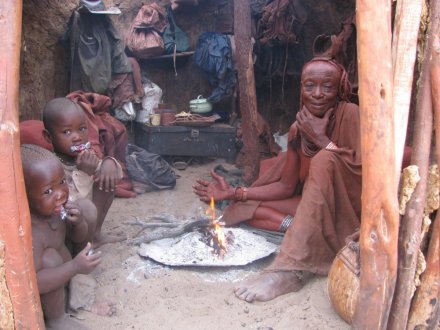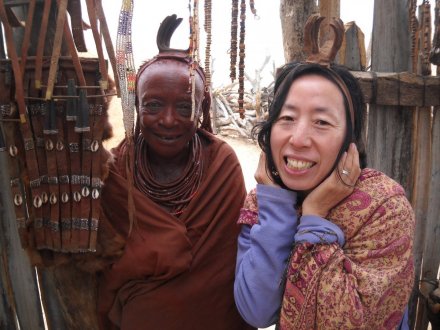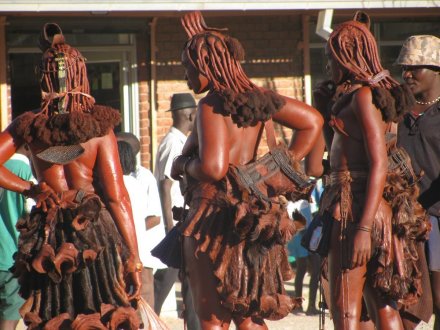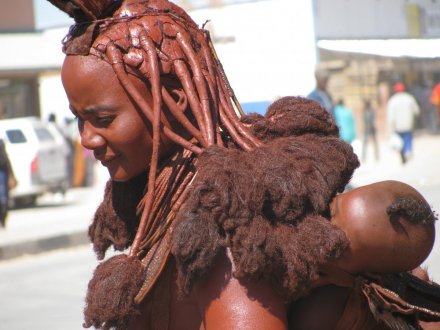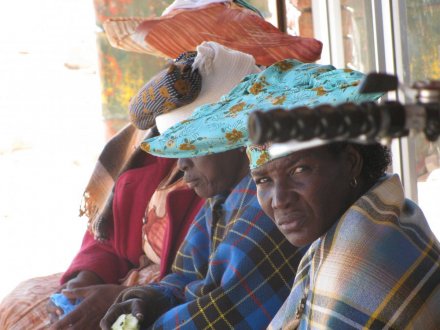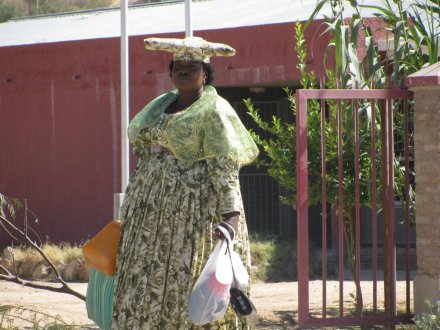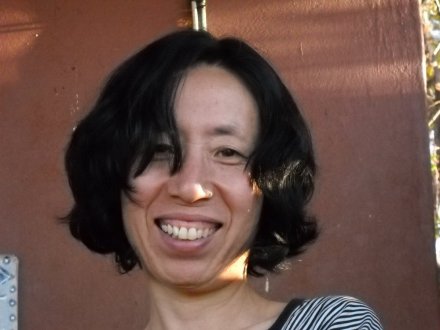This area is one of the last frontiers in southern Africa. One can see why. There are few people, and most of them are in small tribal groups. The big animals are unfenced. The roads, or should I say tracks, are awful. Sometimes there are no services, no cell phone coverage, no gasoline, electricity or water. You have to carry what you need. There is a decent road up the coast north of Swakopmund. That area is called the Skeleton Coast because of the number of shipwrecks, the survivors of which usually perished in the desert.
Sand and rough terrain have taken it’s toll on my truck and it’s driver.
For a couple of days, we took along a French guy and his mother. While we were with them, we were in the modern world for a couple of days. We based in Uis and looked at 5000-6000 year old rock paintings and engraving at Namibia’s only World Heritage Site, Twyfelfontein.
I don’t really know why I uploaded this one. I guess it just captures how a group looks while they are doing the desert safari thing. This was at a pretty amazing petrified forest, much more impressive than the one in Wyoming.
After going up that way for a while, we headed up to more remote areas, like where that primary school sign was. It was nice to see animals that aren’t in parks. Here are desert elephants and rhinos there, but we didn’t see any of those. We did see many springbok, gembok, oryx and the like, as well as a few giraffes and zebras.
Oh, I have a picture of a 1500 year old flower near Swakopmund. Maybe someone would like to pin this on his prom date.
It’s really easy for first world tourists like Myung and me to focus on the natural splendors, rock paintings, animals, etc., and to hang out with white people. Shoot, so far the whites here are culturally similar to us. They speak English, even if their first language is German or Afrikaans. It’s not easy to connect with the blacks. I’ve found that when we do speak with them, they are working for the whites and there is a socio-cultural divide. It’s more pronounced than in the US. Getting together with traditional blacks is even harder. I can’t say we’ve gotten to know any, but we have visited a couple of villages and talked with one woman for a little while who worked for the owners of a guesthouse (of sorts) in Opuwa. Like all the tourists who get up this way, we take pictures and try not to be geeks.
This is a Himba village.
It’s interesting the way the men wear regular western clothes and the women often don’t. Here is that guy’s girlfriend and her kids. The women have kids whenever and eventually marry someone.
Here’s dadie, looking after her grandkids like most of the other grandmas of the world.
Fat chance Myung was going to try on the traditional clothes, too.
Up here, you don’t have to be in some far flung village to see traditional people. Like in India, Laos or Peru, they go to town.
The women can spend up to three hours a day getting dolled up. they cover their bodies with a mixture of ochre, mud and oil to get than brown glow. The hair is amazing. It’s also fixed up that way with ochre and mud. They take it down and redo it about every three months. They say their scalps don’t itch.
Here are a couple of young girls flirting with the boys. They parade up and down the street, showing off. Too bad it leads to a terrible HIV+ rate.
There are other tribes up here. The Herero have interesting headwear. The women like to become very fat.
After doing all that up there, we came down here a few hundred kilometers to this town of several thousand, Outjo, to have some work done on the brakes. We’re going up to Etosha National Park, Namibia’s premier wildlife habitat. That should be excellent. You’ll be seeing pictures, of course. Until then, be well, all of you.
I can’t remember if I posted this picture of Myung. WE made another DVD of our pictures and ran across this one again. Gosh, I love this one.

